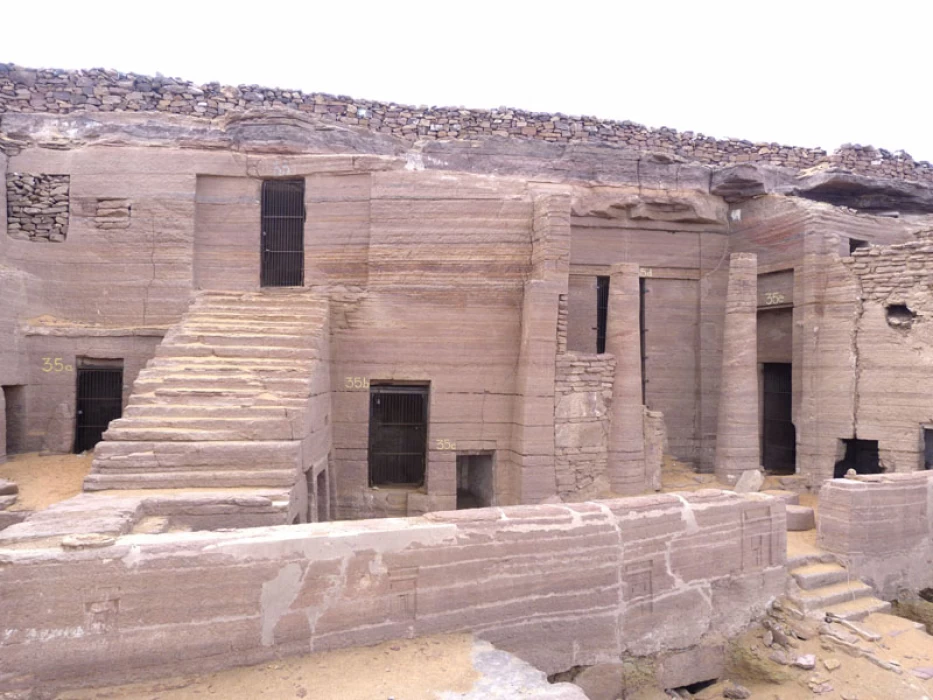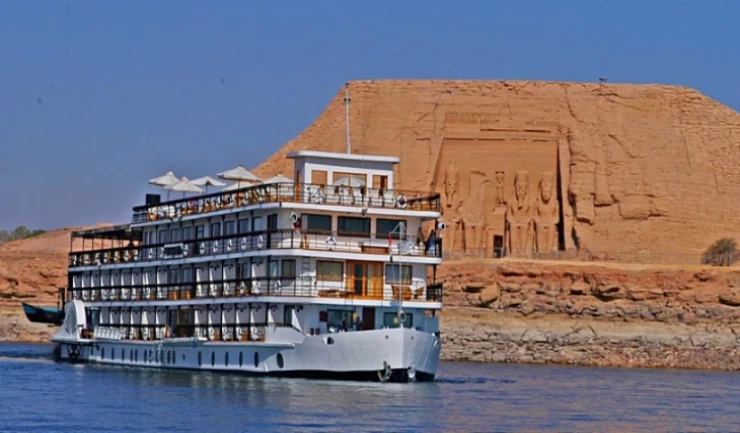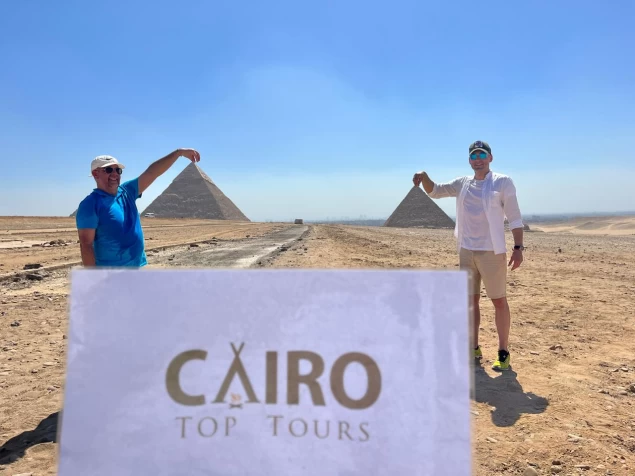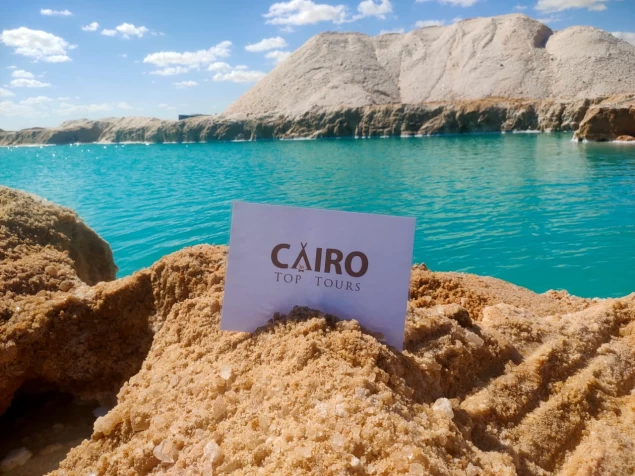
Tombs of the Nobles in Aswan
Tombes des Nobles à Assouan
Les tombes d'employés spécifiques, de contremaîtres, de prêtres, de soldats, de fonctionnaires, de vizirs, de princes ou d'autres personnes de calibre similaire, généralement trouvées dans des zones funéraires importantes de l'Égypte ancienne, sont collectivement appelées les Tombes des Nobles. Les tombes des Nobles d'Assouan sont situées sur de hautes pentes en face d'Assouan, juste au Nord de l'île de Kitchener, où des tombes bien préservées, au Sud des gardiens de la porte et d'autres dignitaires se trouvaient sur l'ancienne île Éléphantine.
Temple de l'île Éléphantine à Assouan
Ces cimetières font toujours l'objet de fouilles et de recherches sur d'autres cimetières, où six tombes décorées étaient actuellement ouvertes au public entre 2014 et 2017 après J.C.
Les tombes du père et du fils Mykho et Sabini remontent au long règne du pharaon Babi à partir de la 22e dynastie. Des sculptures à Kabsabani racontent comment son armée et ses dirigeants se sont rassemblés en Nubie pour punir la tribu responsable du meurtre de son père lors d'une précédente campagne militaire et récupérer le corps de son père. À son retour, plusieurs inscriptions dans la tombe de Sapni conservent leurs couleurs d'origine, et il y a quelques inscriptions pour la chasse et la belle pêche; ils sont représentés avec ses filles dans la salle des colonnes.
Le cimetière se compose d'un hall d'entrée, d'une salle des piliers et d'un couloir menant à la chambre funéraire. Vous pouvez voir les tombes des Nobles à Assouan, l'obélisque inachevé et le temple de Philae. Ainsi que de nombreux endroits incroyables lors de nos meilleures excursions d'une journée en Égypte, Assouan day tours, qui vous donnent la chance d'explorer la majeure partie de l'Égypte. Vous pouvez également essayer nos excursions d'une journée au Caire pour visiter Assouan et Louxor depuis l'aéroport international du Caire.
Typiquement, les tombes égyptiennes se composaient de deux parties principales: un lieu d'offrandes ou une chapelle décorée, au rez-de-chaussée, où la mémoire du propriétaire de la tombe était vénérée, et une sous-partie, où le corps du défunt était enterré avec ses biens. Bien qu'il ne fasse pas partie des monuments les plus visités de Haute-Égypte. Il contient de merveilleux arts anciens et revêt une grande importance pour les anciens royaumes, alors profitez de votre séjour à Assouan et découvrez ces précieux monuments.
Conseils pratiques pour les Visites
Le moment le plus efficace pour visiter: Quant aux tombes, il vaut mieux les visiter pendant les périodes les plus fraîches de l'année, c'est-à-dire d'octobre à avril, ce qui économisera vraiment beaucoup de la chaleur torride de l'été. La meilleure lumière pour la photographie et un moment plus agréable seront tôt le matin ou en fin d'après-midi.
S'y rendre: Il y a les tombes des Nobles sur la rive orientale du Nil; vous pouvez vous y rendre en taxi ou en bateau. Il est conseillé de faire une visite guidée si vous voulez vraiment voir et en apprendre davantage sur l'importance des tombes.
Choses à transporter: Des chaussures confortables sont essentielles pour marcher, de la crème solaire et un chapeau, et beaucoup d'eau sont indispensables pour une excursion dans les tombes. Ainsi qu'un appareil photo pour saisir l'art et l'architecture qui vous attendent.







-webp.webp)










